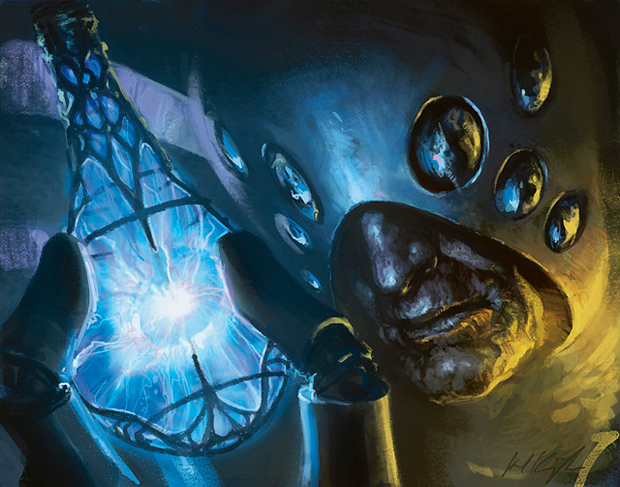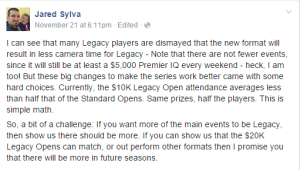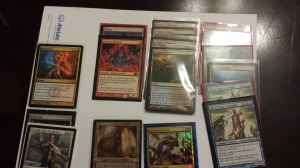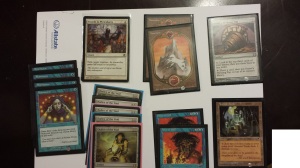By Guo Heng Chin
Blue and I go a long way back. Throughout my competitive Magic life, I was a hardcore blue player. I would never attend a tournament without my arsenal of counterspells and card draw, be it a casual Friday Night Magic or a Pro Tour Qualifier. I still play blue nowadays and card draw spells have yet to cease to excite me but my love affair with blue has been less intense, in no small part due to Wizards pushing Magic’s design paradigm towards more interactivity (read: less counterspells, more creatures). Nevertheless, the majority of my Commander decks still run blue, as the number of design mistakes in blue is too damn high.
Before I begin, yes there was no typo in the title of today’s article. Its Commander Foil: Blue because I only wrote about a single Commander foil today.
My research initially yielded four blue Commander foil to discuss, but the Modern Masters 2015 announcement threw a wrench into my plans. It was no surprise that Helene Bergeot’s announcement before the finals of the World Championship would unveil the next Modern Masters set, however it was beyond my expectation that Modern Masters 2015 would include the blocks from the first Modern Masters( Eighth Edition through Alara Reborn) on top of the new blocks (Zendikar and Scars of Mirrodin).
I made my picks with the assumption that Modern Masters 2015 was going to pick up where Modern Masters left off, and at the very least includes Innistrad with Snapcaster Mage and Liliana of the Veil carrying a hefty price tags today. In retrospect I should have saw the hints: handing out Geist of Saint Traft and Griselbrand as tournament participation promos and Liliana of the Veil as the prize for winning a Preliminary Pro Tour Qualifier were Wizards’ attempts to alleviate the price of expensive Modern staples from Innistrad (someone mentioned this in an article or tweet but I could not seem to retrace it. Drop me a comment if you know who it was and I shall add a reference to that person). While I was happy that my Snapcaster Mages shall retain their value for a little longer, and potentially even experience a bump in price, the Modern Masters 2015 announcement meant that three out of four of my undervalued blue Commander foil picks, which were from the original Mirrodin block, were invalidated due to the increased risk of a foil reprint. Oh well, I guess I can’t have the cake and eat it too.
Nevermind that. The announcement of Modern Masters 2015 gave me plenty of writing fodder. Jared Yost wrote a marvelous overview of the cards that could see a reprint in Modern Masters 2015, so I am not going to discuss that that, read his article if you want an overview. The announcement of Modern Masters 2015 made me reevaluate a whole bunch of my Modern stakes, so after discussing the single remaining blue Commander foil, I am going to delve into an in-depth audit of my Modern holdings.
Stealing Spells in Style
First, put your hands together for the Commander foil of the day:
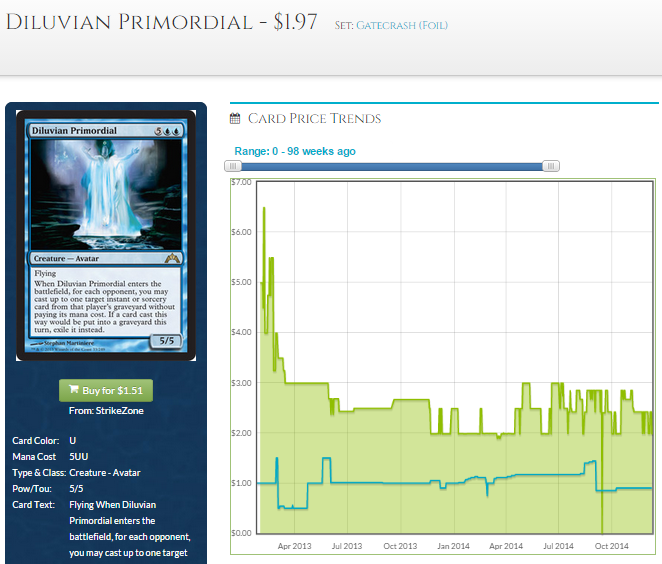
Gatecrash Foil Price: $1.97
No. of Foil Printings: 1
Gatecrash’s Primordial cycle was blatantly aimed at Commander players, with each Primordial triggering an iconic spell effect in its color upon entering the battlefield. Sylvan Primordial, the green one, was so game-warping that it was banned in Commander. While Diluvian Primordial was not the best Primordial in the cycle, it came pretty close to second. Commander games are full of powerful spells and stealing them and then casting them for free is just plain awesome and makes for many epic moments.
Diluvian Primordial also holds the virtue of being in the same color as the dreaded Deadeye Navigator, because stealing your opponents’ spells just once is not good enough. Foils of Diluvian Primordial are going for under $2 as Gatecrash is relatively fresh in the Magic community’s memory, but I doubt its price would remain the same as Gatecrash fades further away in time. Diluvian Primordial is technically a cheat card and as I have described in my article on the Increasing Savagery Theory, these sort of cards increase in potential as more cards are added to Magic’s card pool.
The risk of Diluvian Primordial getting reprinted in future blocks is relatively low; while the Primordial cycle cards have names and creature types that are generic enough to fit into most planes, I doubt Wizards would be keen on reprinting the whole cycle given that Sylvan Primordial is banned in Commander and the Primordial cycle is pretty much geared at Commander players. If the Primordials were to be reprinted, it would most likely be in a supplementary product like the now-annual Commander releases where Wizards has the liberty of printing each Primordial independent of the cycle. The annual Commander releases would not impact the foil price of cards.
A Personal Modern Audit
The cards in my modern portfolio whose fate I was most excited to hear about in Helene’s announcement were these guys:
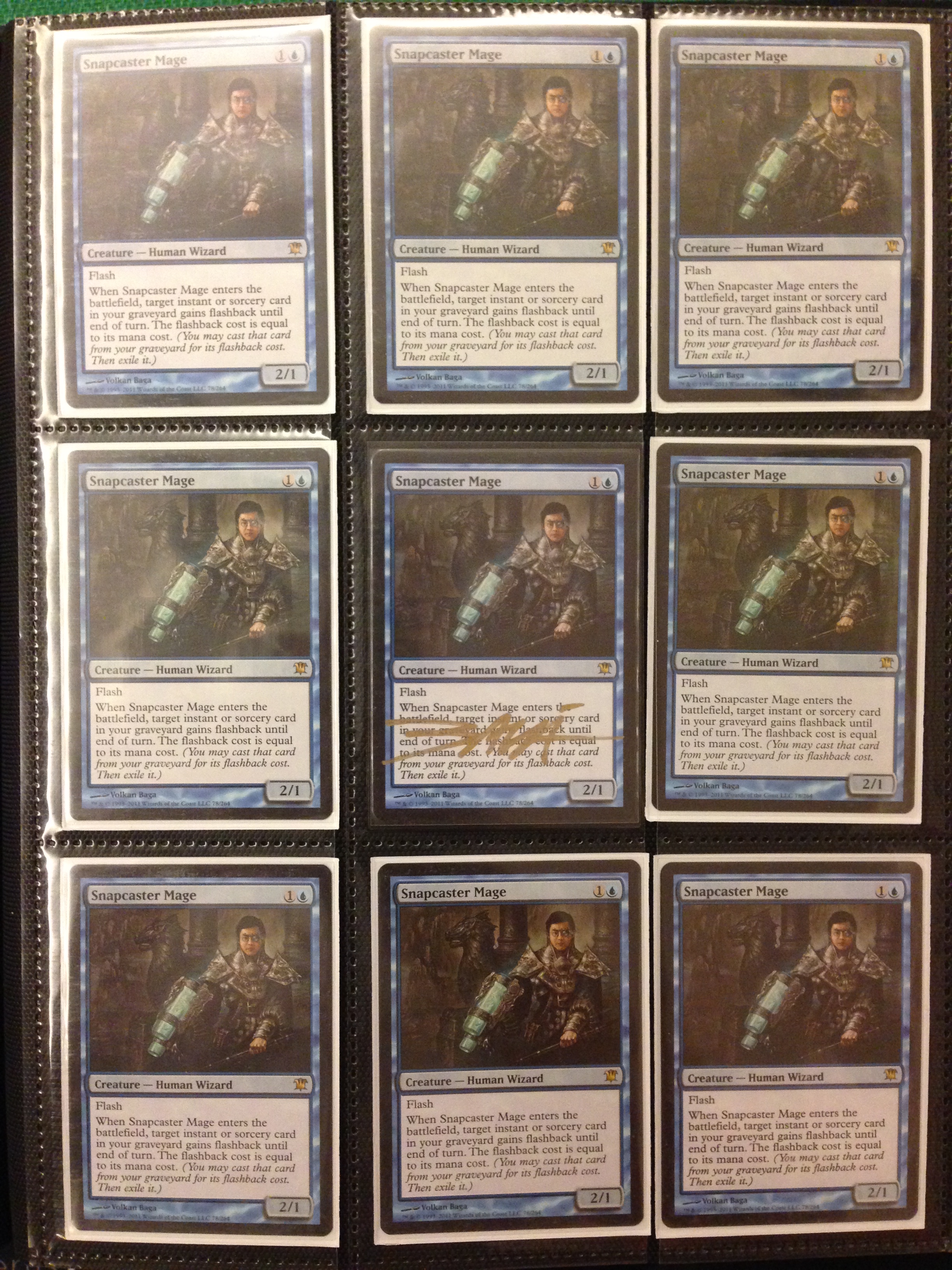
I was watching Worlds at my local game store after their Preliminary Pro Tour Qualifier (spoiler: I did not do well with RG Bees) when Helene came on screen. I literally jumped with joy when I heard that Modern Masters 2015 would only cover sets up to and including New Phyrexia.
Those Tiago Chans have been sitting in my folder since Innistrad was legal. Snapcaster Mage’s growth has been slow but steady, sitting at $32 as of writing, slightly less than double my buy-in price. $15 in growth in two years was not a great investment admitedly, but I bought those Snapcasters with the intention to sit on them for a long time, a decision spurred by a thought experiment suggested by @rezaaba which went along the lines of How many Tarmogoyfs would you buy if you can go back in time?
Snapcaster sees more play than Tarmogoyf in Modern, and nearly as much presence as Tarmogoyf in Legacy according to mtgtop8.com. Snapcaster Mage is also played in Vintage. I am not saying that Snapcaster has the potential to reach the hallowed price of Tarmogoyf, and I highly doubt it ever will, but I do expect Snapcaster Mage to see a slow, sustained growth through the years along the lines of Dark Confidant and Vendilion Clique, both cards that saw less play than Snapcaster Mage. Granted those cards came from the pre-mythic era and were from sets with a significantly smaller print run than Innistrad, they were also played much less than Snapcaster Mage.
I am of opinion that Snapcaster Mage would still retain his price even with an eventual reprint, with a multitude of outcomes dependent on a few variables:
Outcome I: Snapcaster is reprinted as a mythic rare in the Modern Masters set after Modern Masters 2015 (lets call it Modern Masters 201X). Assuming the set would still be a limited print run and the boosters retain a premium price tag, Snapcaster Mage’s price would not tank at all. I am hesitant to predict that Snapcaster would follow in the footsteps of Tarmogoyf, Dark Confidant and Vendilion Clique as the third Modern Masters edition is unlikely to spur that many new entrants into Modern as with the first Modern Masters.
Outcome II: Snapcaster is reprinted as a rare in Modern Masters 201X. Refer to Cryptic Command’s price trajectory after Modern Masters. It took a dip for a few months following Modern Masters’ release before clawing its way back up to higher heights, like a phoenix. From an economic point of view, I speculate that it is unlikely for Wizards to reprint Snapcaster Mage as a rare in Modern Masters 201X. By the time Modern Masters 201X comes around, Snapcaster Mage’s price would be much higher than his current price, and Snapcaster would be one of the marquee chase card of the set. Putting your marquee chase card as a rare reduces its exclusivity.
Outcome III: Snapcaster is reprinted as Grand Prix or World Magic Cup Qualifiers promo. These two scenarios would probably tank his price the most. However, I am using most in comparing it to the other outcomes, rather than in general. It is hard to predict how much of a hit Snapcaster’s price will take if he is handed out to every Grand Prix participant. Batterskull and Griselbrand, both eternal staple mythics with a single printing, have yet to recover from the dip caused by their Grand Prix promo, as with Geist of Saint Traft who lost half his value over the summer after being handed out as a WMCQ participation promo.
A note on cards with new art: The Modern Masters version of Dark Confidant and Sword of Fire and Ice demand a higher price tag compared to their older counterparts on average, with a more pronounced difference if you look at individual shops. This could be due to the fact that the Modern Masters version perceived to have a lower number of circulated copies. It is hard to predict the financial implications of a new art Snapcaster Mage. There are too many unknown variables here: how well-received will the new art be and how limited the print run of Modern Masters 201X would be. Regardless, I doubt new art would have an effect on the price of the old art version. It is not as if hordes of players would irrevocably reject the old art Tiago in favor a new face.
I am personally keeping my Snapcaster Mages for a few more years at the very least. Yes, I am taking a risk in which one out of the three outcomes would result in a drop in price. I am willing to bear the risk because a) Snapcaster could not drop any lower than my buy-in price in 2012 and b) Snapcaster has the potential to be so much higher than he currently is it makes the risk tolerable.
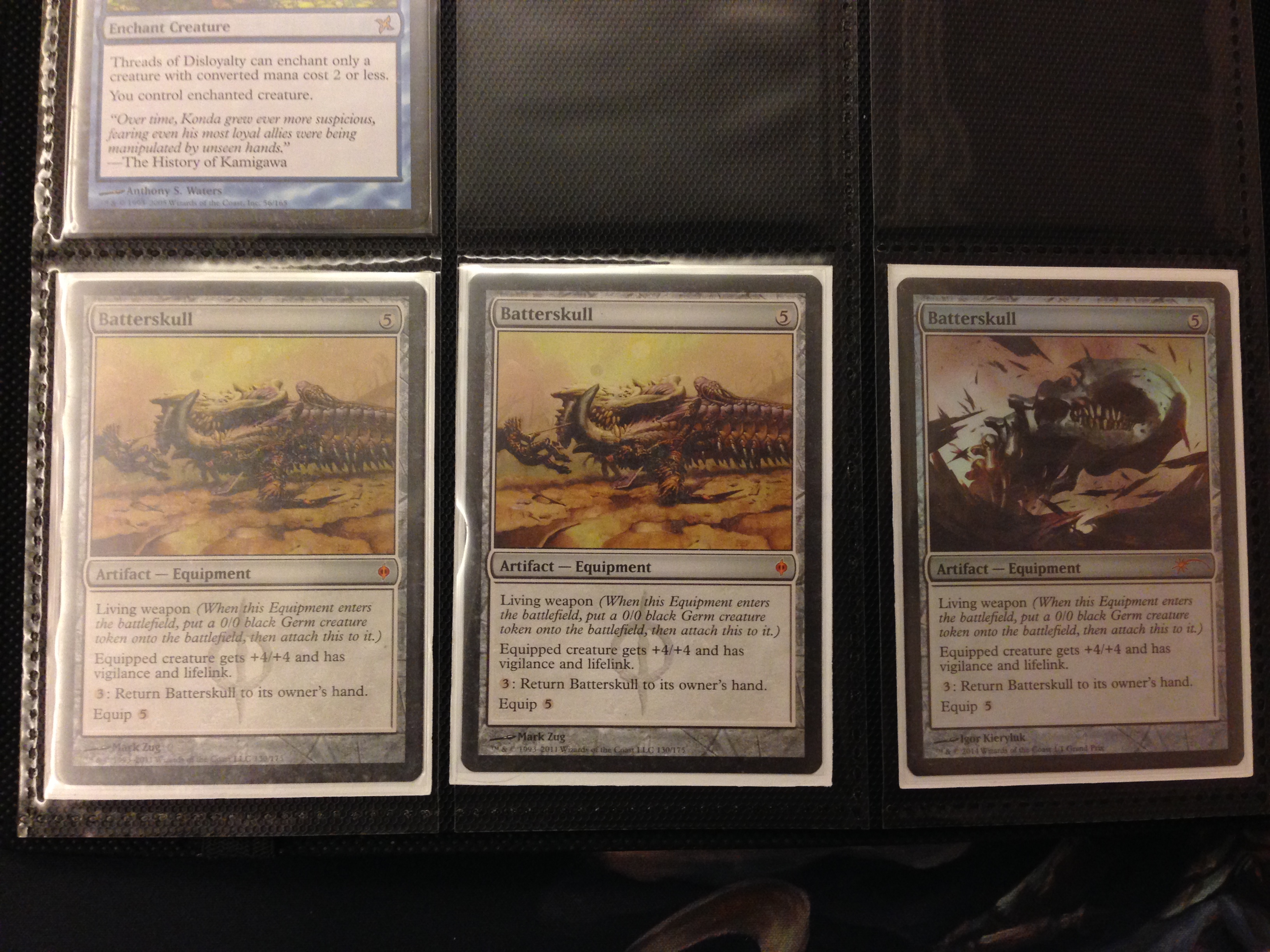
Thankfully those three Batterskulls above are my only copies and they are for personal use. A third copy just in case there comes a day when a tier one deck runs three copies of it. One day. Well, at least I do not need to share Batterskulls between my Duel Commander decks!
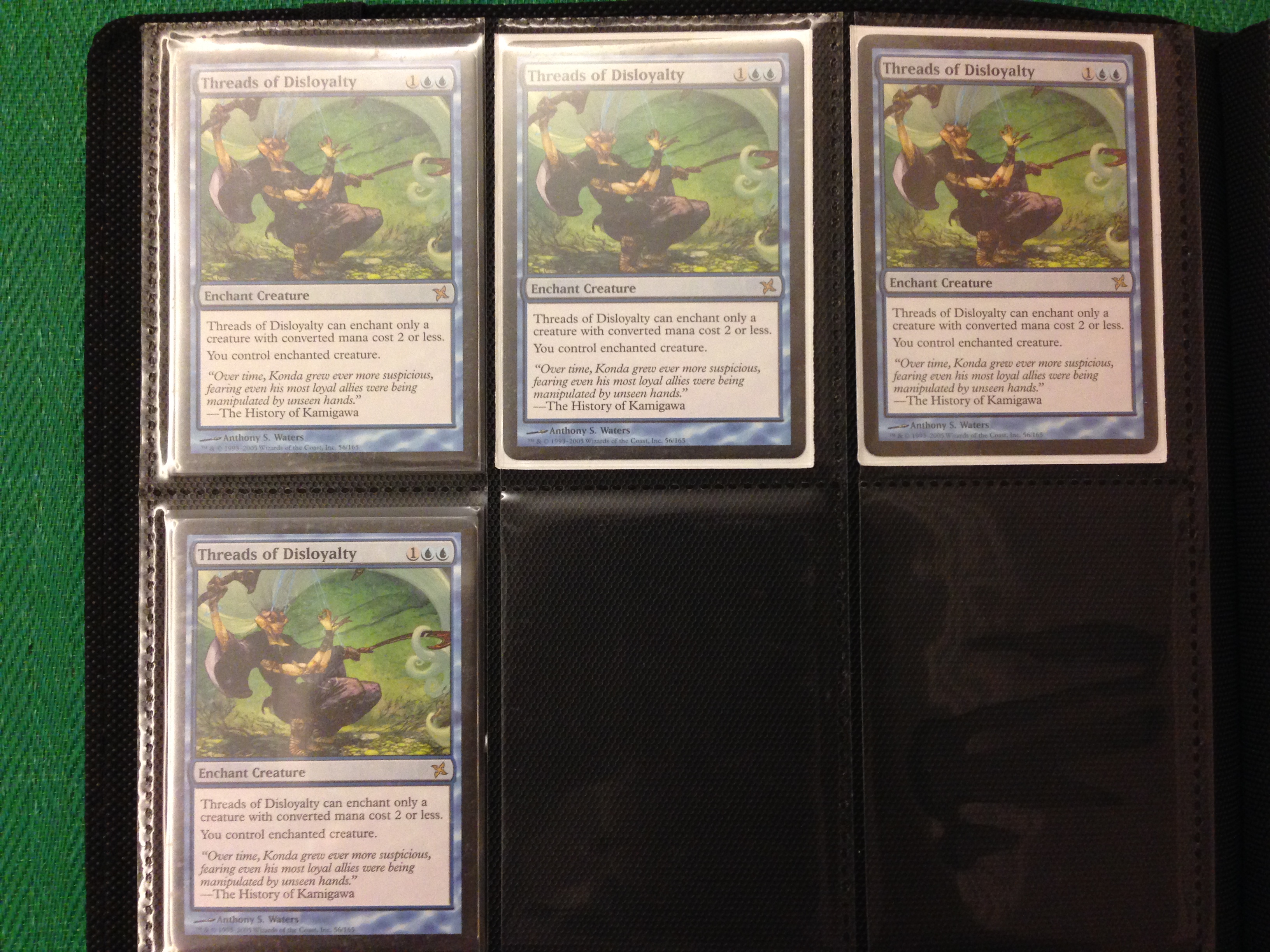
Threads of Disloyalty dodged the reprint bullet the first time around, but I doubt it will dodge it again. After a spike early this year, Threads is now sitting at $21, making it one of the more expensive sideboard cards in Modern and a good target for reprint. I am not sure how much would a Modern Masters 2015 reprint would hit its price in the long term. After all, Blood Moon is now twice its pre-Modern Masters price after taking a dip for a few months post Modern Masters.
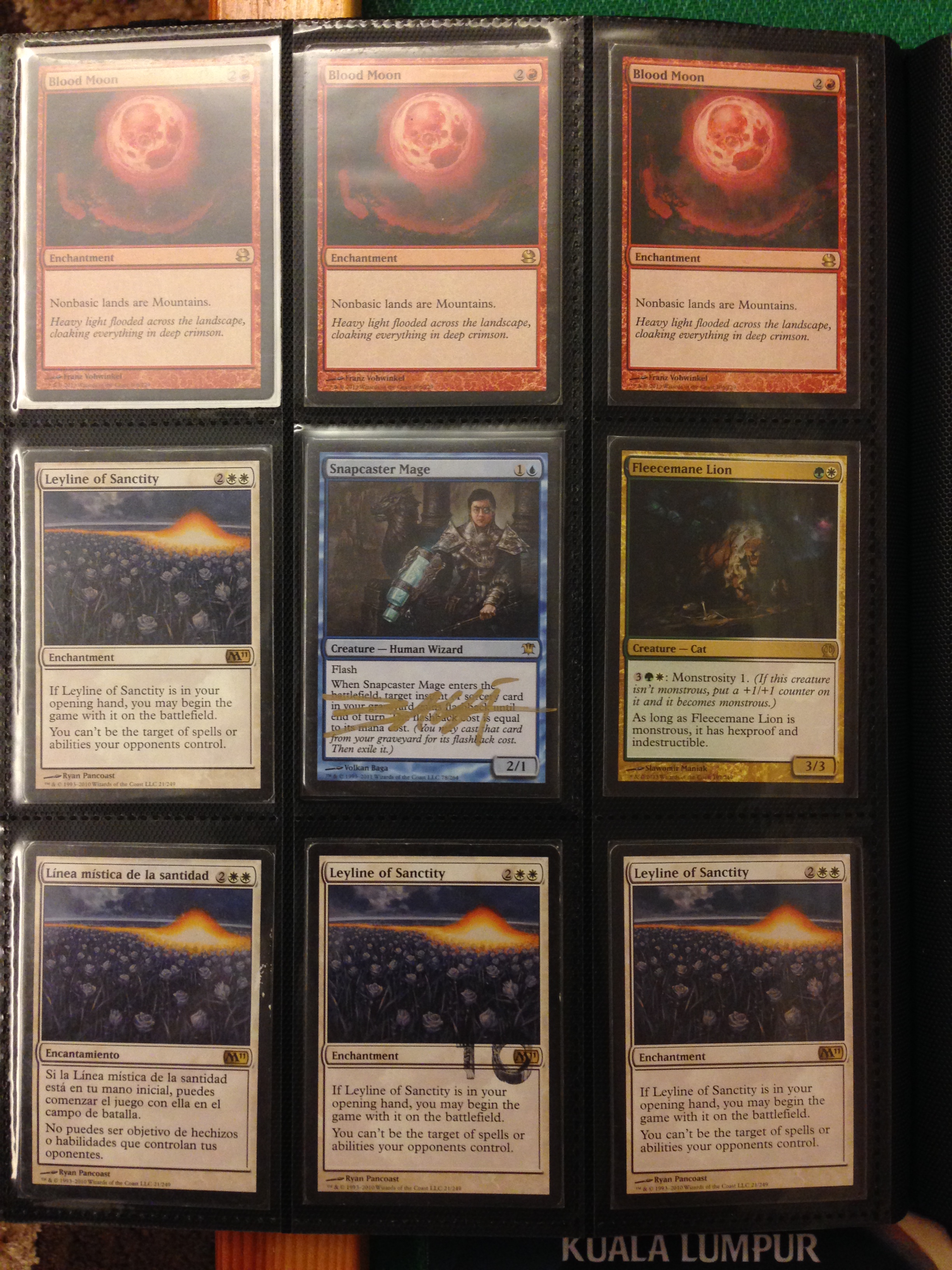
See Threads of Disloyalty. Wizards be damned if it cost Modern players $81 just to hedge against Burn decks and discard spells (Three is the usual number of Leylines in the sideboard). Leyline of Sanctity is another card that is best bought a few months after Modern Masters 2015 comes out.
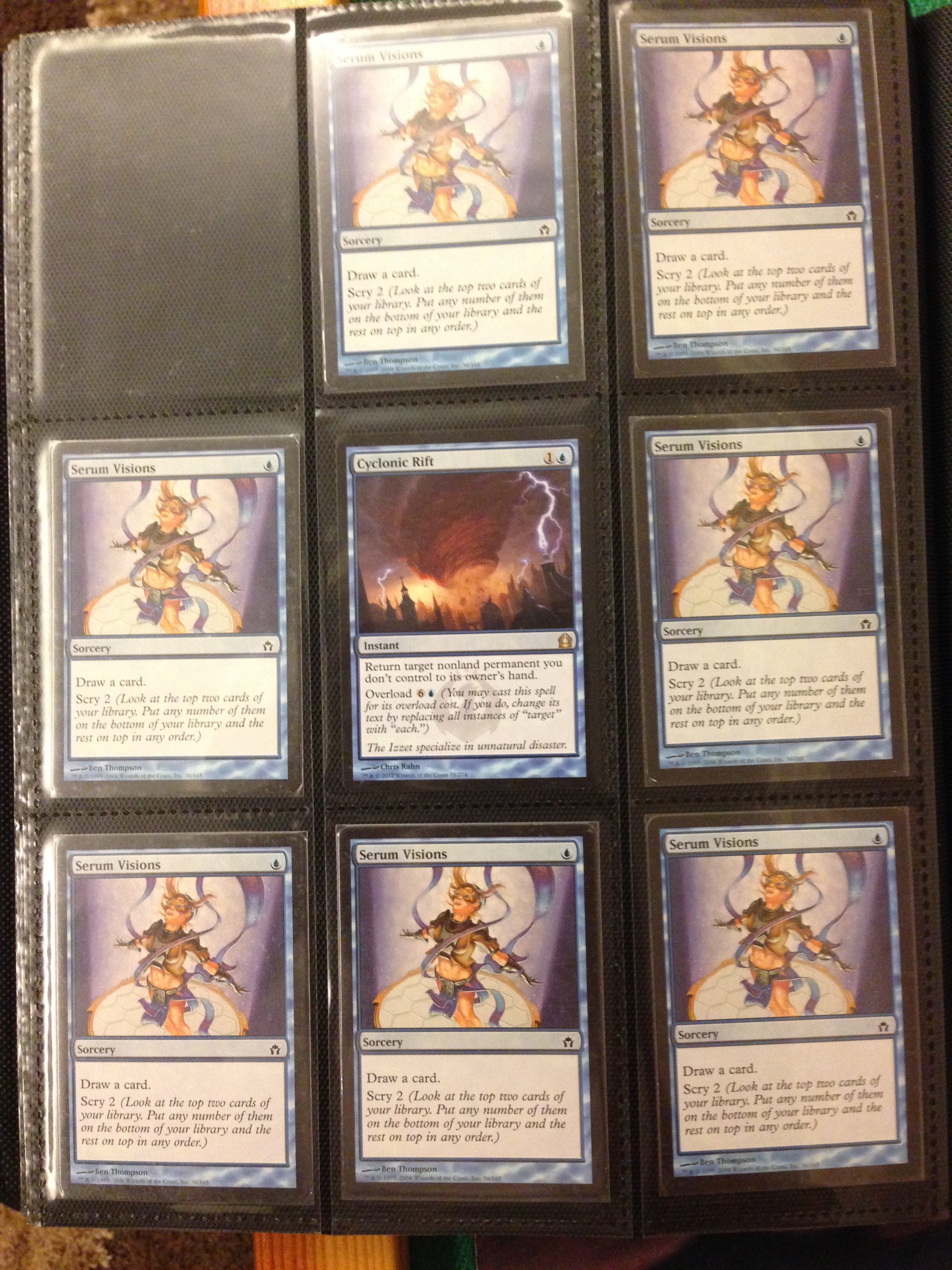
As Jared mentioned, Serum Visions is a highly likely candidate for reprinting. Theros had the scry mechanic, but unfortunately the plane does not have serum-producing Blinkmoths and Wizards is edging away from one mana blue cantrips from a design standpoint. Bad Wizards. I too think that there is a high chance we would be opening Serum Visions in Modern Masters 2015, seeing that Wizards chose not to reprint it in any of the supplementary products they could have fit Serum Visions in. I envision my $7 Serum Visions to be worth much less this time next year.
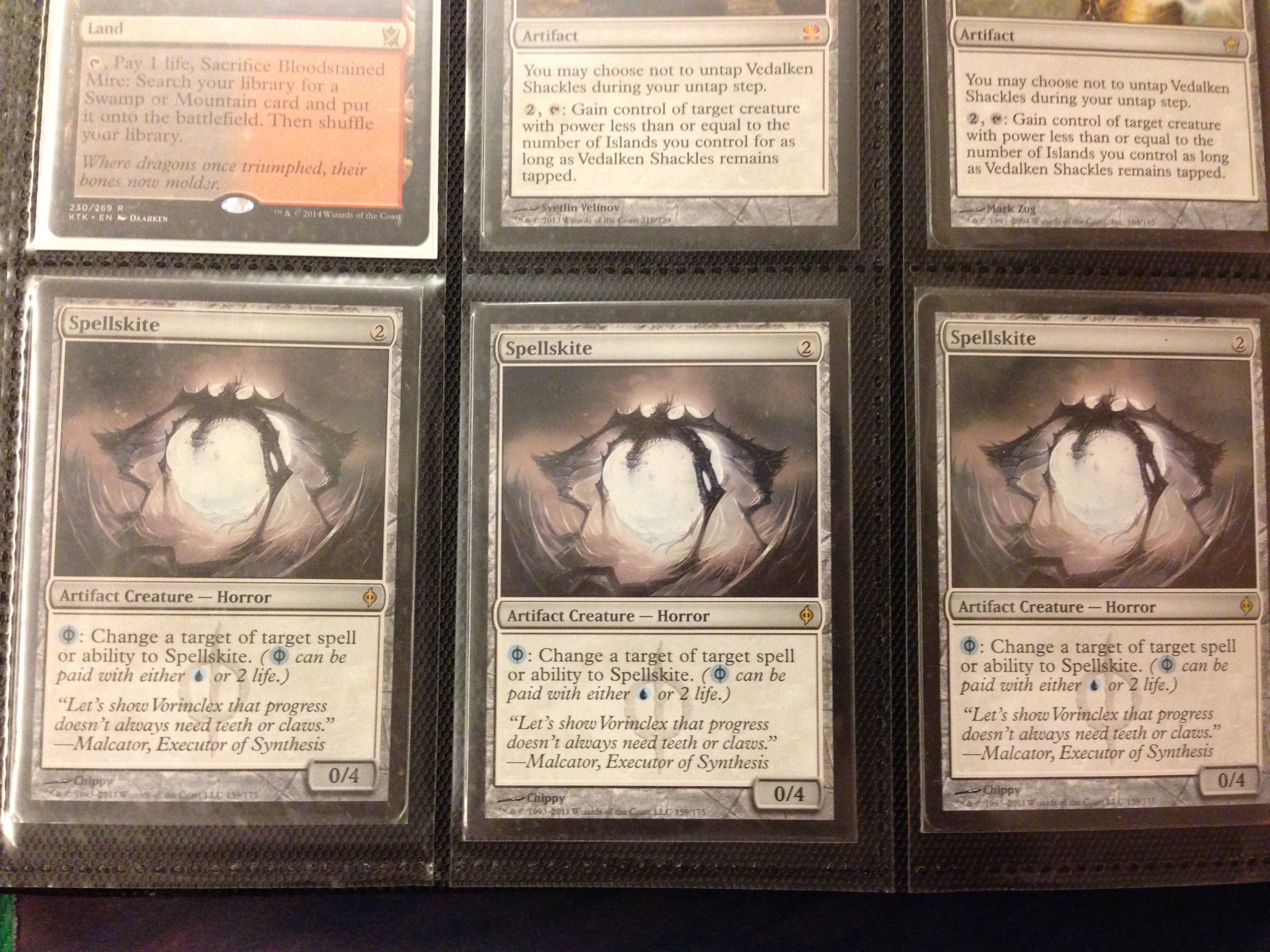
Another card I am glad that I only kept a personal playset.
Wizards is taking their promise to keep Modern accessible seriously and no Modern staples are safe from reprint. I think the era of insane Modern-induced spikes is coming to an end. That key four-of card in that new breakout deck at that GP/PT/SCG is too expensive? Just wait for the next Modern Masters/supplementary product/block set.
Modern staples are still viable investments but now with a lower profit margin and higher risk. If you want to speculate on Modern cards, do not get too greedy, leave the remaining 10% to the other person as per Corbin Hosler’s advice, be acutely aware of any news of upcoming products, and try your best to stay ahead of impending reprints with compulsive research.
ADVERTISEMENT: Save up to 46% off retail prices during the CheapCardSleeves Cyber Monday sale, now extended through this week! Enjoy huge discounts on Ultra Pro, KMC, and Dragon Shield sleeves. If you’re looking to stock up on card sleeves, now is the time!

